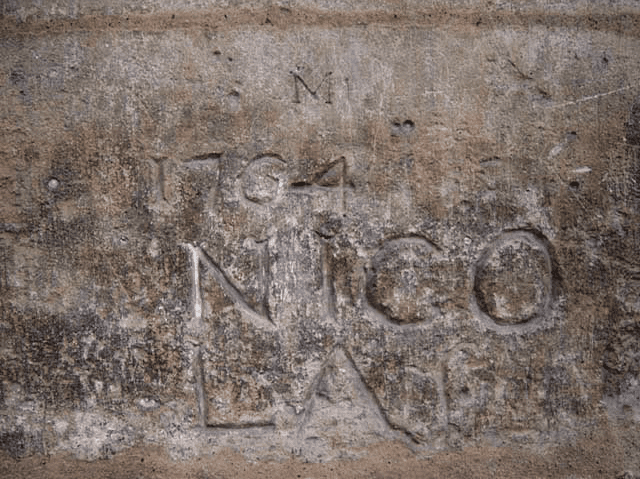I often get asked about the origins of street art. Most people connect it with the NYC Graffiti that emerged in the 1970s. But graffiti form is much older than that. For a fact, it already existed in ancient times.
What exactly does “graffiti” mean? In its raw definition, graffiti is a form of a drawing or short text written or scratched without authorization on someone’s else property.

In Paris, the oldest trace of this sort of writing can be found at Place des Voges. It reads: “1764 Nicolas”. Today, I want to reveal who is the author of this mysterious tag. His name was Nicolas Restif de la Bretonne, and he was a writer. 1764 is the year when the tag was created. Nicolas came from a poor peasant family near Chablis, Auxerre. At 20 years of age, he was sent to Paris to presume a career of a typesetter. But very soon, he left his work at the Royal Printshop of The Louvre to perceive his new dream of writing. His first books gained lots of popularity. He was so passionate, and so productive, that to save paper, he would often print directly for publishing, without a hand script. He usually wrote about his many lovers, prostitutes, and the dangers of a big city, lurking at the young man from the countryside. He represented the immorality of 18th-century society of Paris.

He loved wandering around the city, and during those walks, he would mark his presence with metal pin, usually on limestone walls of the buildings. Often there were aphorisms and wise quotes that he wanted to leave behind. Sometimes there were names of his lovers, or even his name (like in the case of the graffiti from Place des Voges). Other times, his sentences referred to real-time events from his life. For example, in 1780, when his wife left, he famously wrote: „Abiit hodie monstrum” – “the monster has left”. When he was refused publication, he would write „Rusticana recusata”, and when he was feeling joyful, he’d scratch the words: „Data tota, felix”. Most of his graffiti appeared at Ile Saint Louis, but none of it survived there.

Today quite forgotten artist still intrigues many Parisians and visitors who notice his tag from 1764 on the walls of Place des Voges. A small reminder of history, of someone who just like us, wandered around the streets of this fascinating city, almost three centuries ago.
Written by : Kasia Klon

